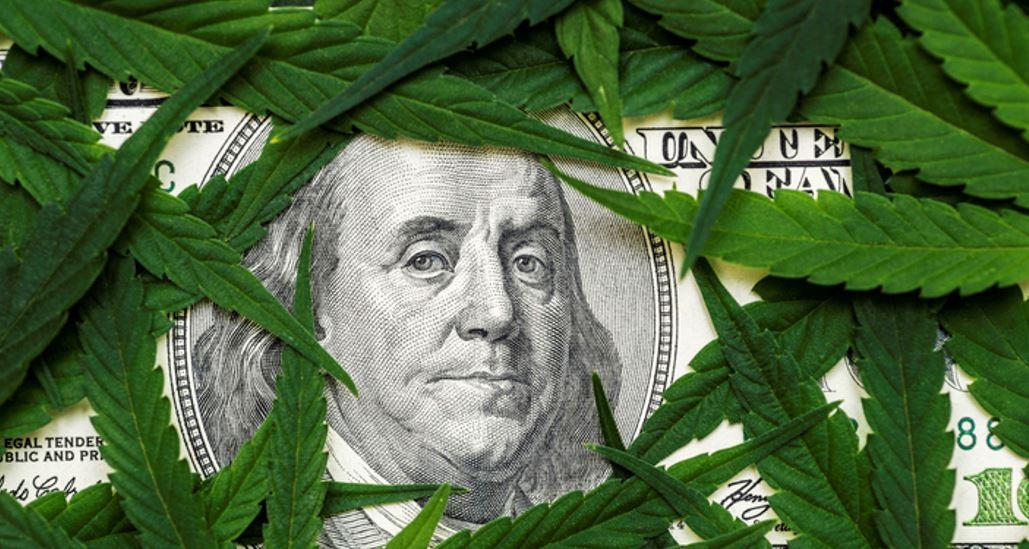
The Real Reason Politicians Want Legal Cannabis Is Tax Money
The latest two states to legalize recreational cannabis are New York and New Jersey. However, if one believes governors and legislators in those states have finally adopted a more libertarian view of the topic, one will be severely disappointed. Legalization of recreational cannabis in both states is driven by the need for tax revenue—tax revenue to plug the holes in state budgets for social programs, holes in the state budget that were exasperated by the failed covid policies in both states. Politicians, clever as they are in hiding their true intentions for public policy changes, want the public to believe that legalization is mostly aimed at ending decades-long practices of racist cannabis enforcement, pointing to the disparities in drug enforcement. However, one will quickly realize that this is only a smokescreen to hide the true reason.
A good starting point is Colorado. In 2002, voters in Colorado passed Amendment 64 and legalized recreational cannabis. Over the last six years, Colorado has collected over $1.6 billion in cannabis taxes and fees at the state level alone. In 2014, Colorado collected just shy of $70 million in cannabis tax revenue, and by 2020 it collected close to $390 million. The State of Washington, probably the closest example to use in estimating the size of potential cannabis tax revenue for both New Jersey and New York, depending on how each state structures the taxes and fees imposed, collected in 2015 close to $65 million in cannabis taxes. By 2020, the number had increased to $470 million, an increase of $400 million in five years. While Colorado levies a 15 percent excise tax and a 15 percent sales tax on cannabis, Washington State levies a 37 percent retail tax on cannabis (for details, see the Tax Foundation). Even in Oklahoma, which created arguably the most free-market cannabis industry in the country, with no limits on how many business licenses can be issued, after voters approved Oklahoma State Question 788 in 2018, lawmakers are very candid about being motivated by dollar signs in times when states are facing a budget crisis. From June 2020 to 2021, Oklahoma collected almost $140 million in revenue from excise and license fees.
Colorado and Washington State have shown governors in the Northeast and Mid-Atlantic how much potential revenue from the legalization of recreational cannabis has been slipping through their fingers. New Jersey and New York, both with projected budget shortfalls, are eager to take advantage of the new potential revenue source. The first state to act was New Jersey. In March 2021, New Jersey governor Philip D. Murphy signed into law three bills that effectively permit and regulate the use of recreational cannabis. At that point, New Jersey was the most populous state in the Northeast ahead of Massachusetts to fully legalize cannabis. While Governor Murphy and state lawmakers talk about ending disparities in drug enforcement and the problem of subsequent overcrowded prisons, behind the scenes lawmakers are already counting on a new source of revenue to continue their spending programs. The new legal cannabis industry in New Jersey is expected to generate about $126 million a year in revenue for the state. Not to be outdone by their smaller neighbor, New York state lawmakers, worried about losing out on significant tax revenue to New Jersey, in July 2021 approved a bill to legalize recreational cannabis. Facing a budget shortfall of more than $60 billion over the next four years, New York’s legalization of cannabis is estimated to generate about $300 to $400 million annually in tax revenue when the legal market is fully established. New York, by far the most populous state in the Northeast, may serve as a catalyst for the cannabis industry in the region. According to the New York Medical Cannabis Industry Association, the cannabis market in New York is estimated to be worth about $4.2 to $4.6 billion and projected to grow to about $5.8 billion in 2027. Pennsylvania, having the longest border with New York, may be forced to legalize recreational cannabis use in order to not lose out on tax revenue. Already a bipartisan bill legalizing recreational cannabis has been introduced in Pennsylvania. More and more states are realizing that legalizing recreational cannabis is the easiest new source of significant government revenue. In April, Virginia became the first state in the South to legalize recreational cannabis.
What is more telling about New York’s motivation to change its attitude towards legalization is the long-standing fight between the governor’s office and the legislature on how to distribute the enormous amount of potential tax revenue that will be generated by legalizing cannabis. Governor Cuomo and Democrats in the state legislature tried several times to legalize cannabis, but each effort unraveled under disagreements over how to regulate the industry. But more telling is the disagreement on how to distribute tax dollars from cannabis sales and distribution licenses.
Legal sales of cannabis are a few years away in both New Jersey and New York. In Massachusetts, it was two years from the time voters approved nonmedical cannabis to the launch of the state’s first dispensaries. Politicians and lawmakers are already injecting into the legalization effort measures that have little to do with creating a regulatory environment conducive to a growing industry. For example, lawmakers are talking about reserving sizable portions of business licenses for minority business owners, disabled veterans, and distressed farmers. If the Paycheck Protection Program and the Restaurant Revitalization Fund are any indication of the success of such initiative, more money will be wasted on social engineering programs that have nothing to do with supporting small businesses. It is very clear that states’ legalization of recreational and medical cannabis is motivated by a need to tap into a new large revenue stream to balance budgets in addition to ending racist cannabis enforcement.




